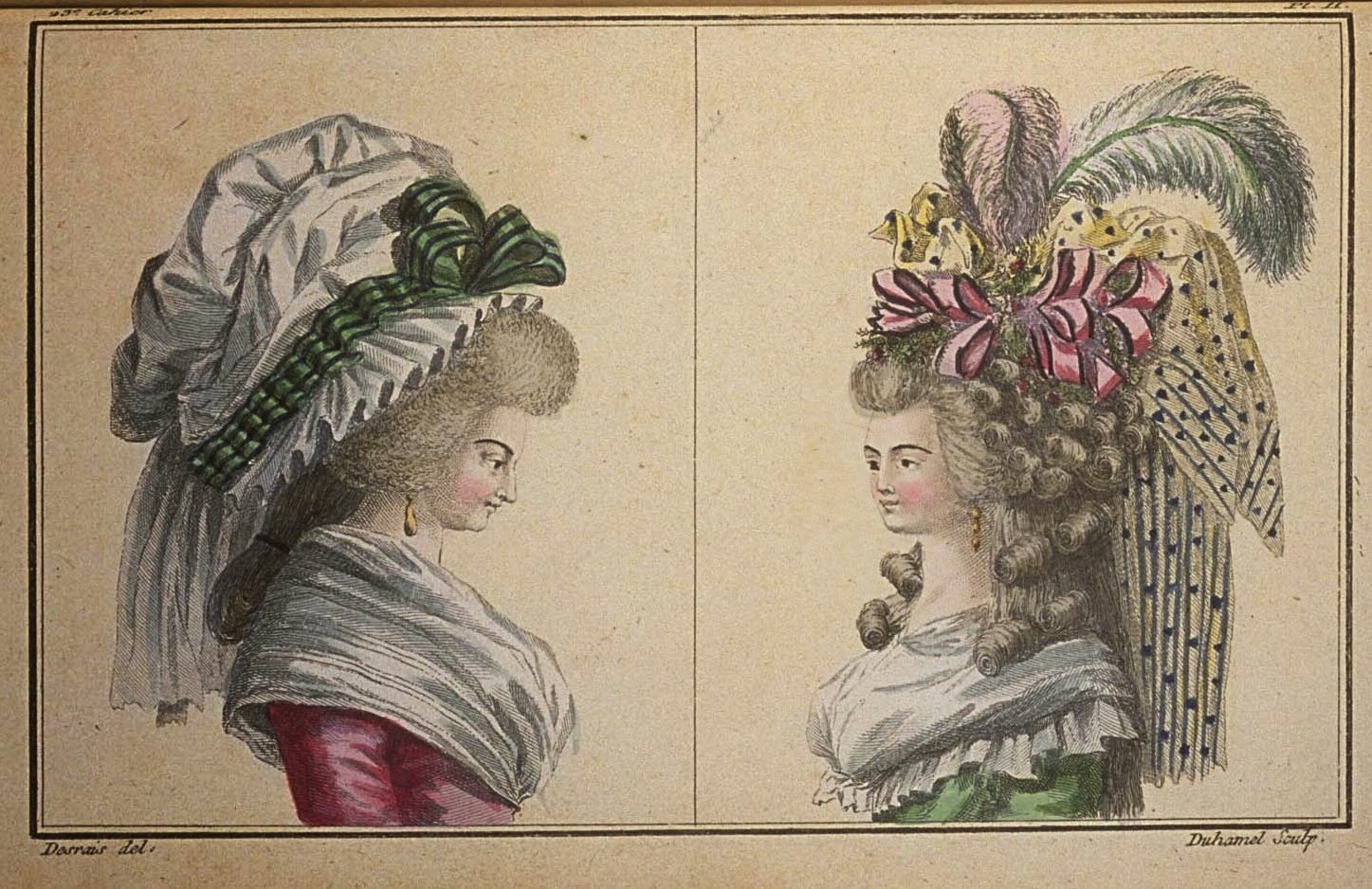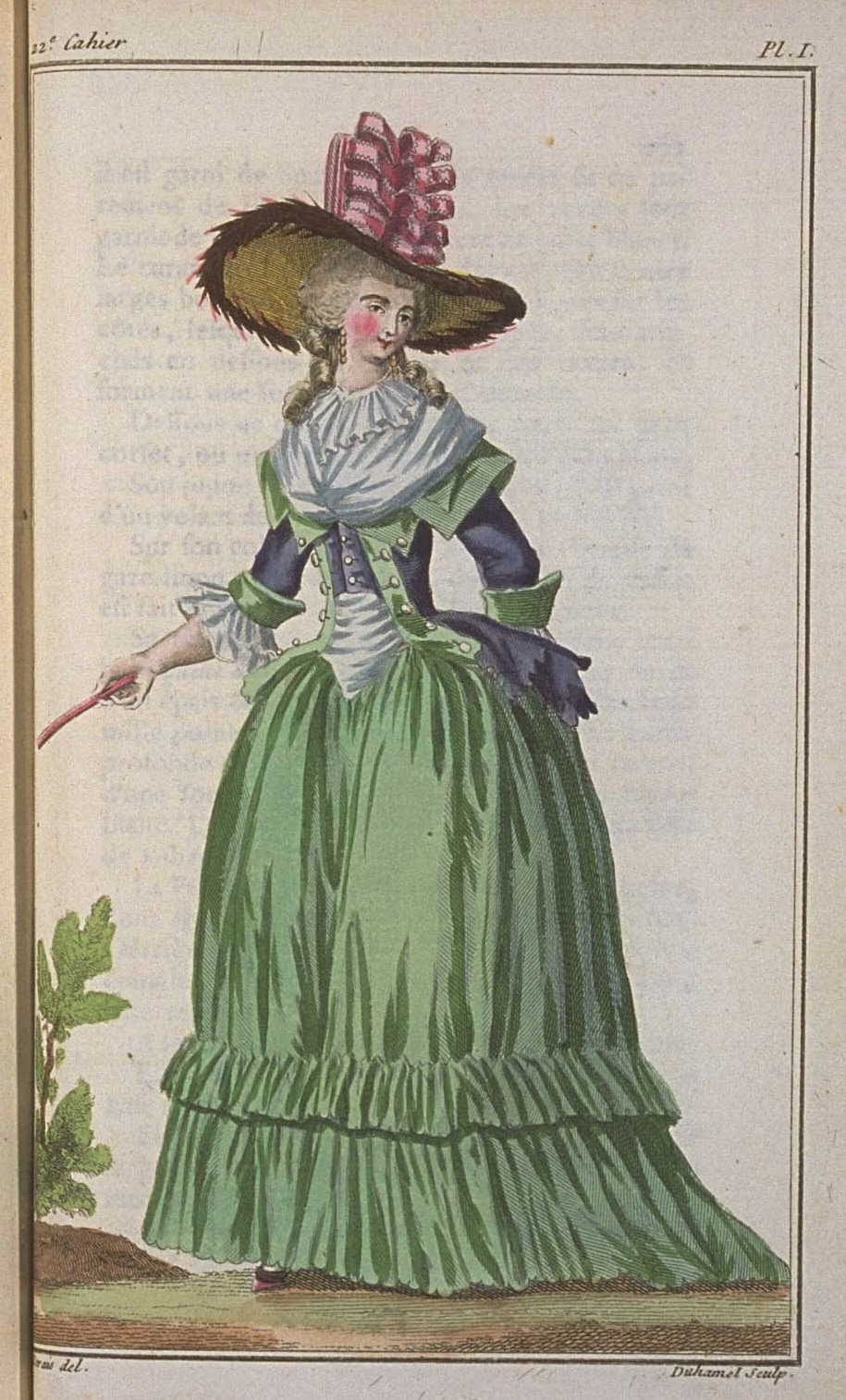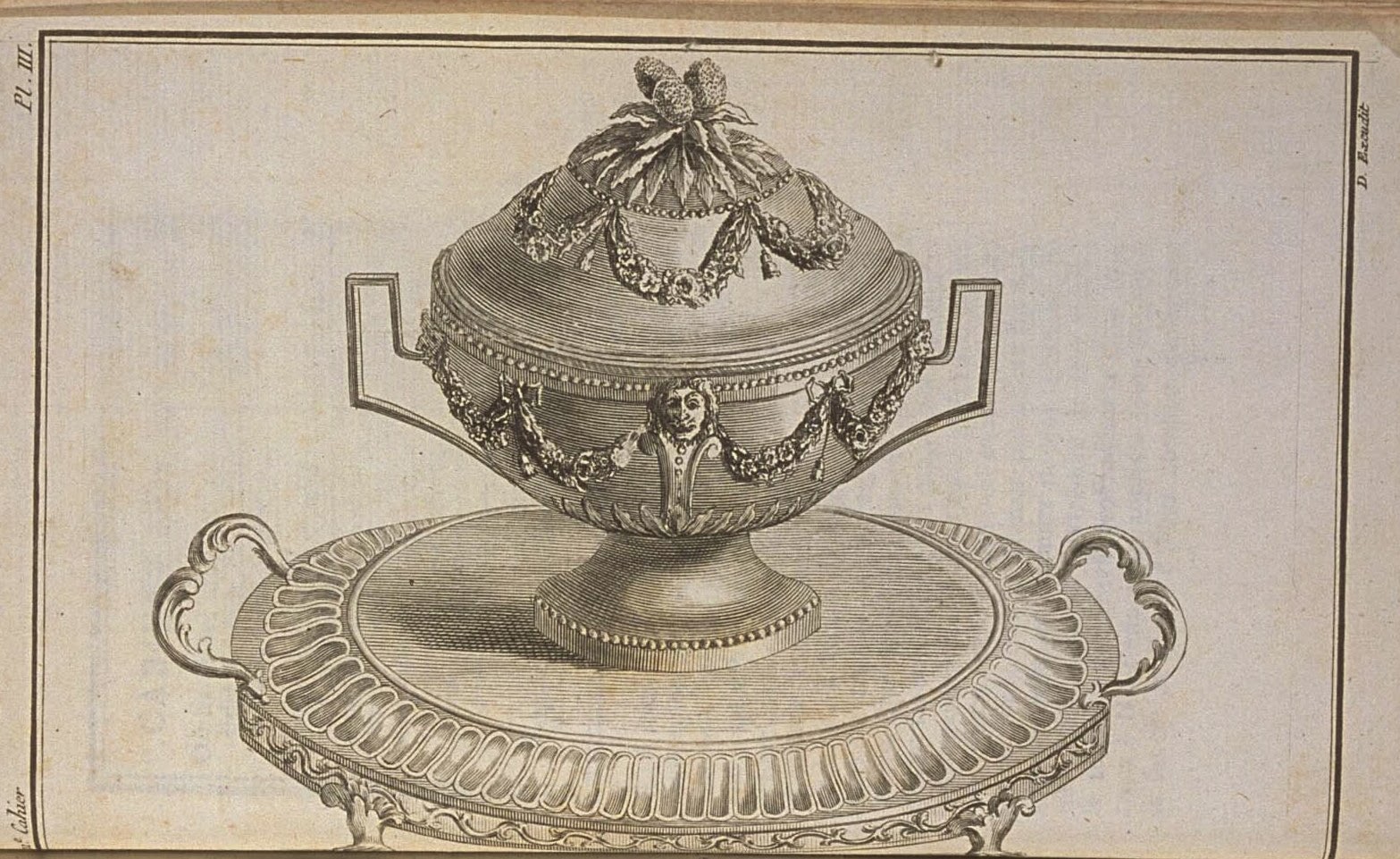Cabinet des Modés, 24e Cahier, 3e Figure

November 1, 1786 PLATE III. TWO women's Busts. The first, dressed in a Sky blue caraco, and her hair done in very-large curls, wears a natural-colored straw hat, lined with a pink satin with wide black stripes, and edged with a black ribbon. The crown of her hat is very-large, and made with a pink gauze with little black stripes. It is tied at the bottom with a wide violet ribbon with green stripes, which forms two large bows, one on the front and the other on the back. On this, the ends of the ribbons fall very-low. This woman wears gold earrings à la Plaquette , and on her neck a kerchief en chemise of gauze. Now chapeaux-bonnettes are no longer worn but for those made in gauze striped in two colors: yellow and black, pink and black, black and blue, green and lilac , white and blue, white and pink, white and green, etc. ... The second Woman, dressed in a pink caraco, her hair done in curls, of which one very-large one falls on her chest, wears a hat...











